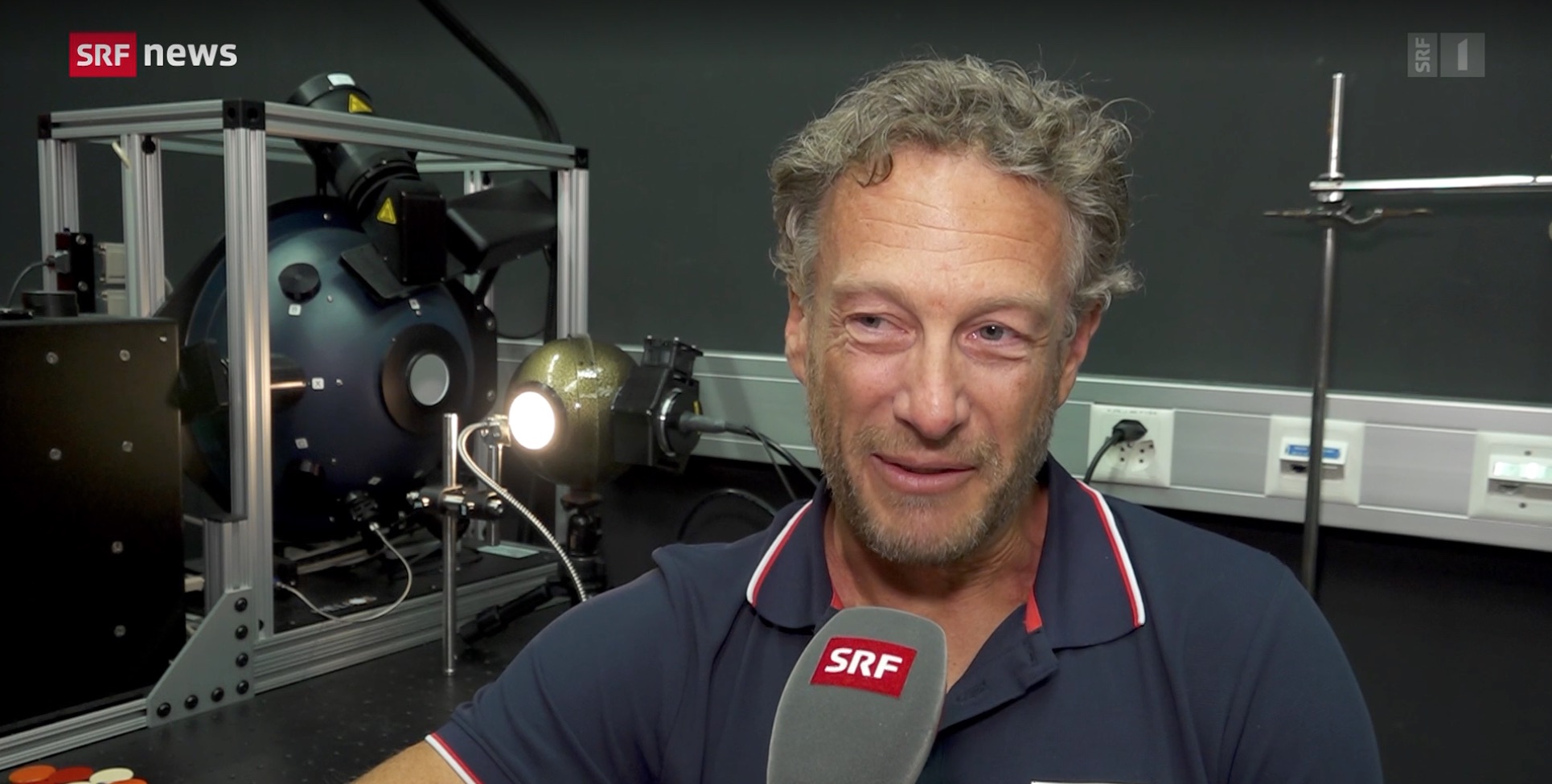Research Begins on Landslide in Blatten
A few days after the landslide in the Lötschental valley, remote sensing specialists from the University of Zurich (UZH) measured the debris cone from above. Analyzing the data will help prepare for future events.


Left side: Visualization of the data in an RGB composite. For this purpose, information from several hundred spectral channels is condensed into a few components. Three components were selected for this image. The different compositions of the debris on the southeastern (orange tones) and northwestern (magenta tones) sides of the valley are clearly distinguishable. Water surfaces are visualized in pale pink.
Right side: True-color image of the debris cone above Blatten on 11 June 2025. (Images: ARES, UZH)
The alarming images of the landslide area and the massive debris cone covering the village of Blatten have spread around the world. Last week, a few days after the landslide, remote sensing specialists from UZH flew over the landslide area using various sensors to collect the first post-landslide full range hyperspectral data from the site of the collapse and the debris cone.
“This data provides much more detailed information about the nature of the debris cone than the previously available photographs,” says Mathias Kneubühler, scientific section head at the Remote Sensing Spectroscopy (RSS) group at UZH’s Department of Geography. Researchers in the fields of geology, glaciology or ecology can now use this data to obtain the clearest possible picture of the situation in Blatten and its potential future developments.
Last Wednesday, Andreas Hüni and Marius Vögtli from the Airborne Research Facility for the Earth System (ARES) at UZH took the images from the air in a Swiss Flight Services SA aircraft. The researchers used three measuring devices: an AVIRIS-4 spectrometer, a laser scanner (LiDAR) and a high-resolution photogrammetric camera.
High-resolution data
The AVIRIS-4 spectrometer is one of the latest narrow-band imaging spectrometer models, also known as “hyperspectral sensors.” It can record electromagnetic waves across an extremely wide bandwidth, from ultraviolet to visible light to short-wave infrared. It also enables a very high ground resolution of up to 30 cm. This means that one data pixel corresponds to an actual area of 30 by 30 cm. The spectral measurement in Blatten was recorded with a resolution of 70 cm.


This hyperspectral data is adding new dimensions to the growing dataset that has been collected by various institutions and providers since the event on behalf of the Canton of Valais. It provides detailed information about the nature of the debris cone’s surface. Depending on which wave range is evaluated, the data contain information about the about the types of rock in the debris and its granularity as well as the amount of water or ice on the surface and the location of any remaining vegetation.
Where is the ice and when will it melt?
“Currently, we are primarily interested in how much ice is in the debris cone – and where exactly it is located,” says Hüni. This is important because, among other things, it determines where and how the debris cone will settle – and how quickly. The initial visualizations of the data that Hüni and Vögtli have already produced clearly show areas with particularly high moisture content. These indicate watercourses or ice that are barely visible to the naked eye.
To predict how quickly the ice will melt, it is important to know whether the ice is covered with stone and debris. These materials heat up more quickly in the sun, causing the underlying ice to melt faster. A detailed analysis of the “wet” areas on the false-color image can provide this information.
To make reliable statements about the nature of the debris cone, the data has to be thoroughly evaluated by the relevant specialists. “We are experts in collecting and processing these data,” says Vögtli. “But we leave the precise interpretation to the geologists and glaciologists.” At UZH, they collaborate with various experts in the Department of Geography. They are also part of an interinstitutional expert group for data analysis.
Rapid approval
It is unusual that the data could be collected in such a short time. Following the rockslide, the Canton was looking into various ways to characterise the debris area and the option to fly hyperspectral sensors was put on the table. In turn, UZH was contacted via existing networks if the hyperspectral AVIRIS-4 sensor could be deployed. Thanks to the involvement of the Canton of Valais, Sixense Helimap SA, EPFL (Earth sensing & observation laboratory) and TerraData AG, a flight permit could be obtained in just three days in the airspace above the Lötschental, designated a no-fly zone by the Canton.

The data set that has now been collected is unique in its wealth of information for an event like the Blatten landslide. “With global warming, it is likely that such events will occur more frequently in the Alps in the future,” says Hüni. He and Vögtli therefore plan to use the Blatten data set to work with specialists to develop methods to speed up the analysis of such data. This would allow them to assist rescue services and authorities in responding to disasters immediately.
Detecting changes in volume
In addition to the spectrometer data, Hüni and Vögtli also collected laser data. The LiDAR data provides an accurate terrain model and can be used to calculate the volume and volume changes of the debris cone more precisely. “The canton took several LiDAR datasets after the rockslide,” says Hüni. “By combining our dataset with the previous ones, we add another data point in the time series of the cone’s volume change.” Combined with the surface data, it is possible to draw conclusions about the location of ice in the cone.
Evaluating this data will keep numerous researchers busy for some time. Hüni and Vögtli are interested in collecting comparable data sets at regular intervals. “This would give us a better understanding of how the landscape regenerates after such an event, which would be useful for future events.”
